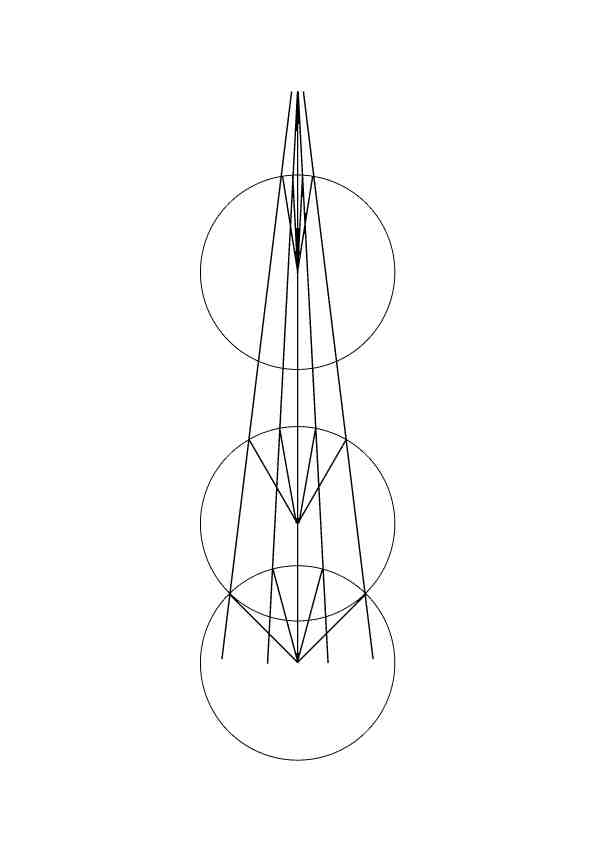Citat:
chupcko:
Cek, ja sam malo zbunjen,
vi ste ozbiljni sa ovim ????
Ja sam ozbiljan! :)
Citat:
chupcko:
mislim, pa rekose vam ljudi da je nemoguce konstruisati ako koristite lenjir i sestar na dozvoljen nacin :).
mslm, pa rekoše i da je ona baba veštica i spališe je na lomači, al ja sam sve nešto sumljičav, "rekoše ljudi" baš i nije neki argument
Citat:
chupcko:
dokaz je toliko trivijalan, da se pitam da li ste procitali neku knjigu iz algebre (da, algebre, i jos jednom da ponovim, ALGEBRE).
Meni dokaz nije trivijalan, a nije bio ni ljudima u 2000 godina dugom periodu sve do 1837, nemam pojma kako se šaltaju sa geometrije na algebru i nazad, kako se dokazuje da je lenjirom i šestarom moguće uraditi samo operacije a=b+c, d=a^2 itd, naročito zašto samo te operacije kako se zna da ne mogu još neke? Nemam pojma šta je polje Galua i šta bi tu trebalo biti trivijalno? Pa onda zatim dokaz je na engleskom nikad ga nisam pročitao na našem jeziku, znam engleski dovoljno da nešto pročitam, al dok prevedem izgube mi se neki bitni detalji, ako smo imali knjigu iz te algebre u sklopu lektire u školi onda jesam, a ako nismo onda nisam, da nisam, i još jednom da ponovim NISAM???
Evo ga dokaz, ništa ne razumem? Proof of impossibility
Rulers. an ideal straightedge is un-marked,compasses
Pierre Wantzel published a proof of the impossibility of classically trisecting an arbitrary angle in 1837.[2] Wantzel's proof, restated in modern terminology, uses the abstract algebra of field extensions, a topic now typically combined with Galois theory. However Wantzel published these results earlier than Galois (whose work was published in 1846) and did not use the connection between field extensions and groups that is the subject of Galois theory itself.[3]
The problem of constructing an angle of a given measure θ is equivalent to constructing two segments such that the ratio of their length is cos θ. From a solution to one of these two problems, one may pass to a solution of the other by a compass and straightedge construction. The triple-angle formula gives an expression relating the cosines of the original angle and its trisection: cos θ = 4cos3(θ/3) − 3cos(θ/3). It follows that, given a segment that is defined to have unit length, the problem of angle trisection is equivalent to constructing a segment whose length is the root of a cubic polynomial. This equivalence reduces the original geometric problem to a purely algebraic problem.
Every rational number is constructible. Every irrational number which is constructible in a single step from some given numbers is a root of a polynomial of degree 2 with coefficients in the field generated by these numbers. Therefore, any number which is constructible by a sequence of steps is a root of a minimal polynomial whose degree is a power of two. Note also that π/3 radians (60 degrees, written 60°) is constructible. The argument below shows that it is impossible to construct a 20° angle. This implies that a 60° angle cannot be trisected, and thus that an arbitrary angle cannot be trisected.
Denote the set of rational numbers by Q. If 60° could be trisected, the degree of a minimal polynomial of cos(20°) over Q would be a power of two. Now let y = cos(20°). Note that cos(60°) = cos(π/3) = 1/2. Then by the triple-angle formula, cos(π/3) = 1/2 = 4y3 − 3y and so 4y3 − 3y − 1/2 = 0. Thus 8y3 − 6y − 1 = 0, or equivalently (2y)3 − 3(2y) − 1 = 0. Now substitute x = 2y, so that x3 − 3x − 1 = 0. Let p(x) = x3 − 3x − 1.
The minimal polynomial for x (hence cos(20°)) is a factor of p(x). Because p(x) has degree 3, if it is reducible over by Q then it has a rational root. By the rational root theorem, this root must be 1 or −1, but both are clearly not roots. Therefore, p(x) is irreducible over by Q, and the minimal polynomial for cos(20°) is of degree 3.
So an angle of 60° = π/3 radians cannot be trisected.
Citat:
chupcko:
i ajde da malo pojasnim, kao sto znate jednacina x = x+1 nema resenja i to vam je ok prihvatiti, a nije vam ok prihvaitti da regularnim koriscenjem lenjira i sestara ne mozete ...
Brt, zzzz kaže da ima rešenje nego da ispada iz poteza lenjirom i šestarom, ne ta tvoja jednačina nego ona njegova, kad smo već kod toga do sad sam skapirao da je tim starim grcima lenjir bio vako neka letvica, neobeležena, samo da je kolko tolko prava, šta im je bio šestar, jel može taj njihov šestar da menja otvor šestara ili uvek moram da crtam istu kružnicu? Hm, moguće i da koristimo različit rečnik po tebi x = x+1 "nema rešenja" a ja bih rekao skoro sve drugo osim taj izraz, da je besmisleno, da nema od čega da se traži rešenje itd...Kao kad bi na srpskom rekao: Trihingulacija je umagumavna, besmisleno je, liči na jezik, ima konstrukciju jezika, koristi neke reči ali nije smisleno, to x = x +1 je samo iskorišćeno x,=,+ i 1 tj. neki simboli karakteristični za matematiku, ispisano na besmislen način? Nema od čega da nema rešenja? :)
Citat:
chupcko:
Ode covek na koju deceniju i u sta se pretvori ovaj forum ...
Ovo ti je upozorenje da ne odlaziš na duže od dva dana, takodje ovo je mad zone ako ćeš o matematici imaš odgovarajući forum, nego ti si još jedan ljubomorko što sam ja prvi rešio :) evo za Diskriminantu još jedna lepa slika da vidi da nisam ništa muljao ni krao, bez sve šege kako bi ste nekom srednjoškolcu koji ne zna šta je polje Guloa, npr. meni, objasnili da ovo nije trisekcija?

Nemoj da pricas?
